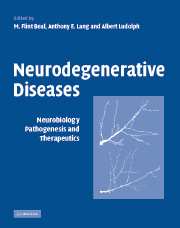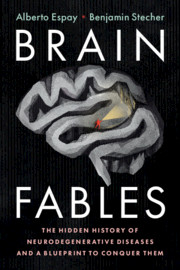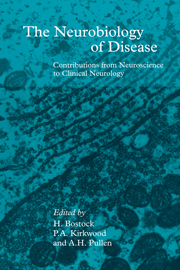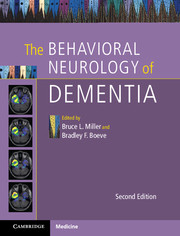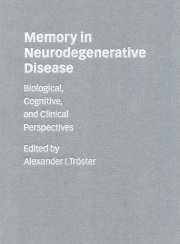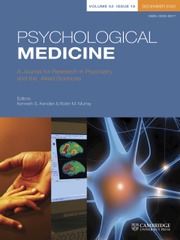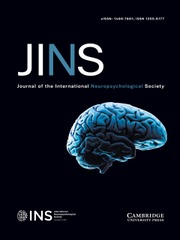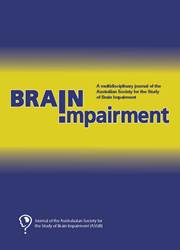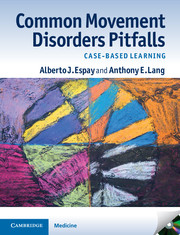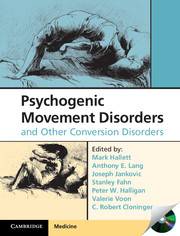Neurodegenerative Diseases
Neurodegenerative diseases are major contributors to disability and disease, with Alzheimer's and Parkinson's diseases the most prevalent. This major reference reviews the rapidly advancing knowledge of pathogenesis and treatment of neurodegenerative diseases in the context of a comprehensive survey of each disease and its clinical features. The editors and contributors are among the leading experts in the field internationally. Covering basic science, diagnostic tools and therapeutic approaches, the book focuses on all aspects of neurodegenerative disease, including the normal aging process. The dementias, prion diseases, Parkinson's disease and atypical parkinsonisms, neurodegenerative ataxias, motor neuron diseases, degenerative diseases with chorea, iron and copper disorders, and mitochondrial diseases, are all methodically presented and discussed, with extensive illustrations. In each case the underlying genetics, neuropathological and clinical issues are fully reviewed, making this the most complete as well as the most authoritative reference available to clinicians and neuroscientists.
- Largest and most comprehensive reference text on neurodegenerative disease
- Editors and contributors include the world's leading authorities internationally
- Covers basic neuroscience and clinical features
Reviews & endorsements
'This book is unique in its attempt to bring together basic and clinical information.' Doody's
'… there is a large amount of information, which will repay careful reading, perhaps especially for those new to the field. The book has high production values … a highly desirable addition for the departmental library.' Advances in Clinical Neuroscience and Rehabilitation
'Neurodegenerative Diseases is one of the most comprehensive books to appear on the subject in the past decade. … Neurodegenerative Disorders is a comprehensive, well-written textbook. It is an excellent reference to have and return to again and again as an authoritative source on neurodegeneration.' Journal of the American Medical Association
'The result is a good view, as of 2004, of the clinical and pathological features, pathophysiology, and prospects for the treatment of neurodegenerative diseases. The book is a weighty and comprehensive overview with an all-star list of contributors. … a good reference book for medical libraries, clinicians, and researchers who are new to the field. It may be particularly good as a textbook for students who need to get up to speed, for example, in a course on the biology of neurodegenerative diseases.' New England Journal of Medicine
'It covers all aspects of neurodegenerative diseases with good and extensive illustrations making it complete and helpful to clinicians and neuroscientists, and the editors are among the leading experts in the field of neurodegenerative diseases.' Neurosciences
Product details
January 2006Adobe eBook Reader
9780511113741
0 pages
0kg
102 b/w illus. 39 colour illus. 80 tables
This ISBN is for an eBook version which is distributed on our behalf by a third party.
Table of Contents
- Part I. Basic Aspects of Neurodegeneration:
- 1. Endogenous free radicals and antioxidants in the brain
- 2. Biological oxidants and therapeutic antioxidants
- 3. Mitochondria, metabolic inhibitors and neurodegeneration
- 4. Excitotoxicity and excitatory amino acid antagonists in chronic neurodegenerative diseases
- 5. Glutamate transporters
- 6. Calcium binding proteins in selective vulnerability of motor neurons
- 7. Apoptosis in neurodegenerative diseases
- 8. Neurotrophic factors
- 9. Protein misfolding and cellular defence mechanisms in neurodegenerative diseases
- 10. Neurodegenerative disease and the repair of oxidatively damaged DNA
- 11. Compounds acting on ion channels
- 12. The role of nitric oxide and PARP in neuronal cell death
- 13. Copper and zinc in Alzheimer's disease and amyotrophic lateral sclerosis
- 14. The role of inflammation in Alzheimer's disease neuropathology and clinical dementia: from epidemiology to treatment
- 15. 15. Selected genetically engineered models relevant to human neurodegenerative disease
- 16. Toxic animal models
- 17. A genetic outline of the pathways to cell death in Alzheimer's disease, Parkinson's disease, frontal dementias and related disorders
- 18. Neurophysiology of Parkinson's disease, levodopa-induced dyskinesias, dystonia, Huntington's disease and Myoclonus
- Part II. Neuroimaging in Neurodegeneration:
- 19. Structural and functional magnetic resonance imaging in neurodegenerative diseases
- 20. PET/SPECT
- 21. Magnetic resonance spectroscopy of neurodegenerative illness
- Part III. Therapeutic Approaches in Neurodegeneration:
- 22. Gene therapy
- 23. Stem cells and cell-based therapy in neurodegenerative disease
- 24. Necessary methodological and stem cell advances for restoration of the dopaminergic system in Parkinson's disease patients
- Part IV. Normal Aging:
- 25. Clinical aspects of normal aging
- 26. Neuropathology of normal aging in cerebral cortex
- Part V. Alzheimer's Disease:
- 27. Mild cognitive impairment
- 28. Alzheimer's disease - overview
- 29. The neuropathology of Alzheimer's disease in the year 2005
- 30. Genetics of Alzheimer's disease
- 31. The role of Beta-amyloid in Alzheimer's disease
- 32. Treatment of Alzheimer's disease
- Part VI. Other Dementias:
- 33. Dementia with Lewy bodies
- 34. Frontotemporal lobar degeneration
- 35. Frontotemporal dementia with Parkinsonism linked to Chromosome 17
- 36. Prion diseases
- Part VII. Parkinson's and Related Movement Disorders:
- 37. Approach to the patient presenting with Parkinsonism
- 38. Parkinson's disease
- 39. Neuropathology of Parkinson's disease
- 40. Genetics of Parkinsonism
- 41. Pathophysiology - biochemistry of Parkinson's disease
- 42. Current and potential treatments of Parkinson's disease
- 43. Multiple system atrophy
- 44. Progressive supranuclear palsy
- 45. Corticobasal degeneration
- Part VIII. Cerebellar Degenerations:
- 46. Approach to the patient with ataxia
- 47. Autosomal dominant cerebellar ataxia
- 48. Friedreich's ataxia and other autosomal recessive ataxias
- 49. Ataxia telangiectasia
- Part IX. Motor Neuron Diseases:
- 50. An approach to the patient with motor neuron dysfunction
- 51. The genetics of amyotrophic lateral sclerosis
- 52. Current and potential therapeutics in motor neuron diseases
- 53. The hereditary spastic paraplegias
- 54. Spinal and Bulbar muscular atrophy (Kennedy's disease)
- 55. Spinal muscular atrophies
- 56. Western Pacific ALS/Parkinsonism-Dementia complex
- Part X. Other Neurodegenerative Diseases:
- 57. Huntington's disease
- 58. Dentatorubral-pallidoluysian atrophy (DRPLA): model for Huntington's disease and other polyglutamine diseases
- 59. Neuroacanthocytosis
- 60. Brain iron disorders
- 61. Neurological aspects of Wilson's disease
- 62. Disorders of the mitochondrial respiratory chain
- Index.

